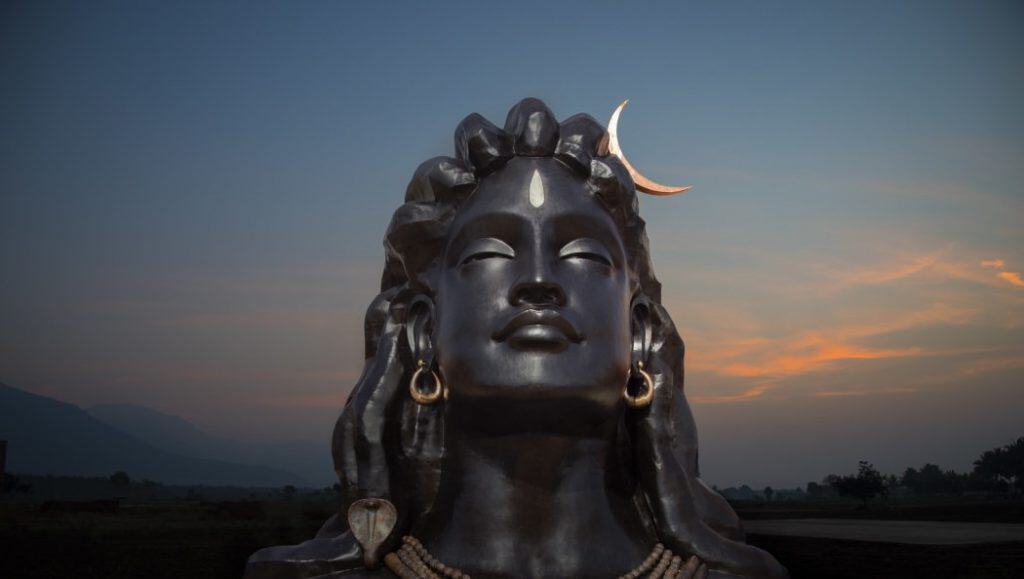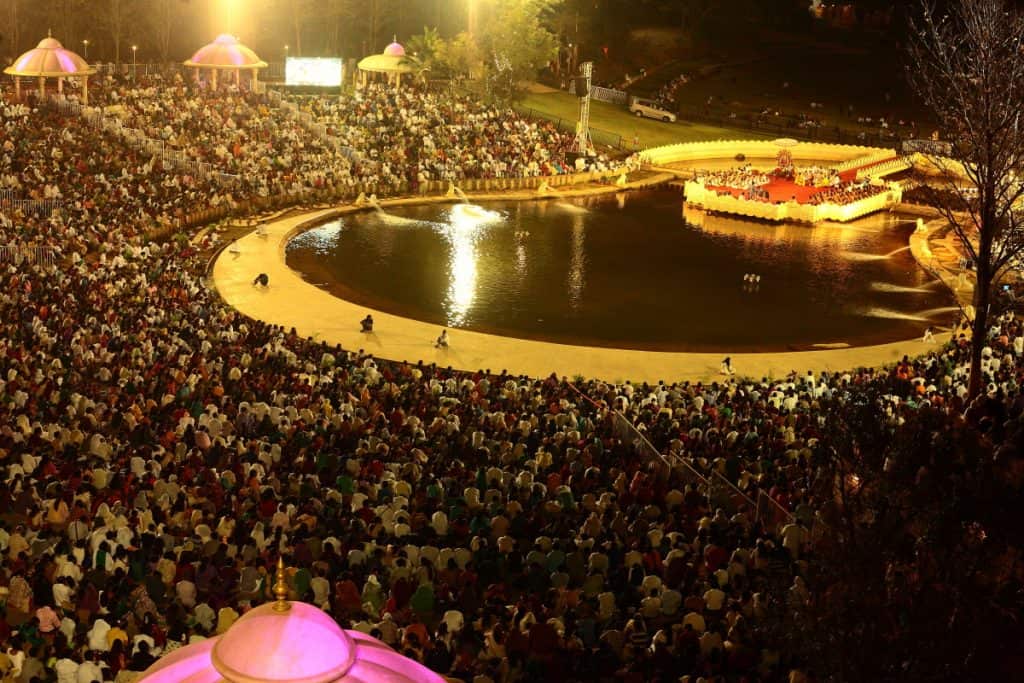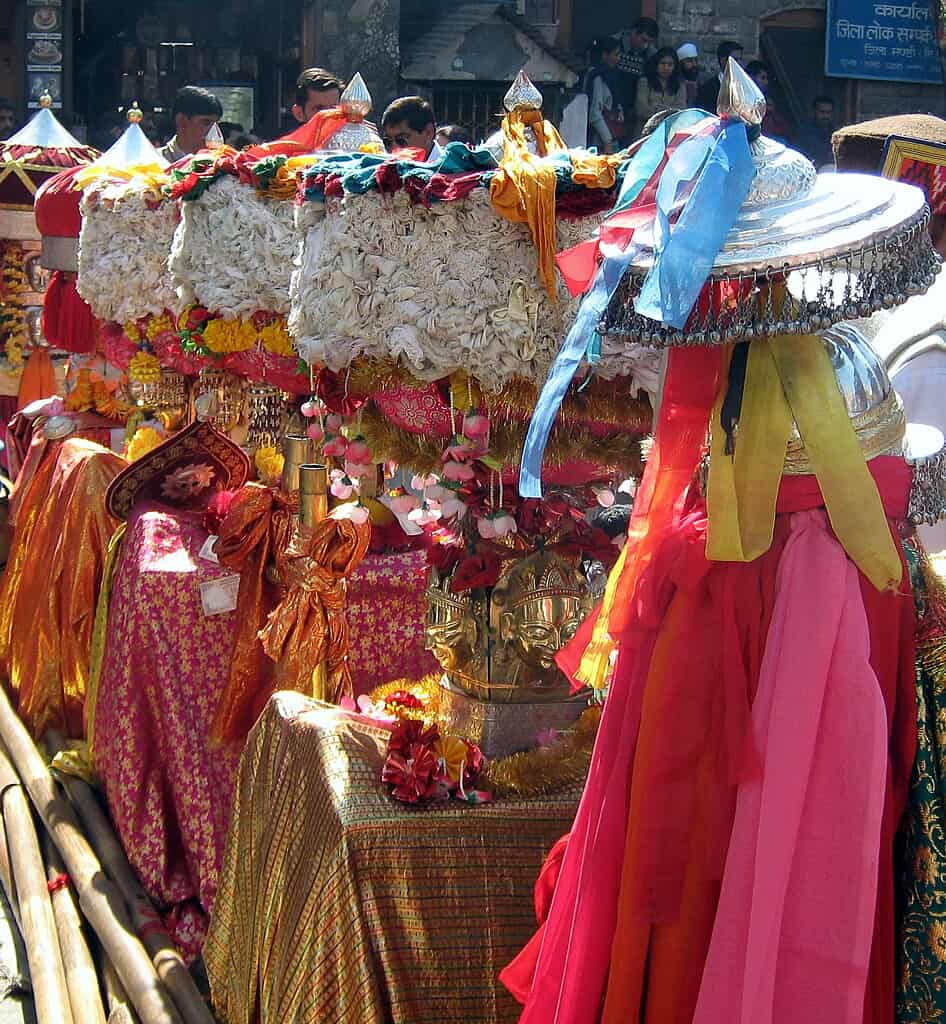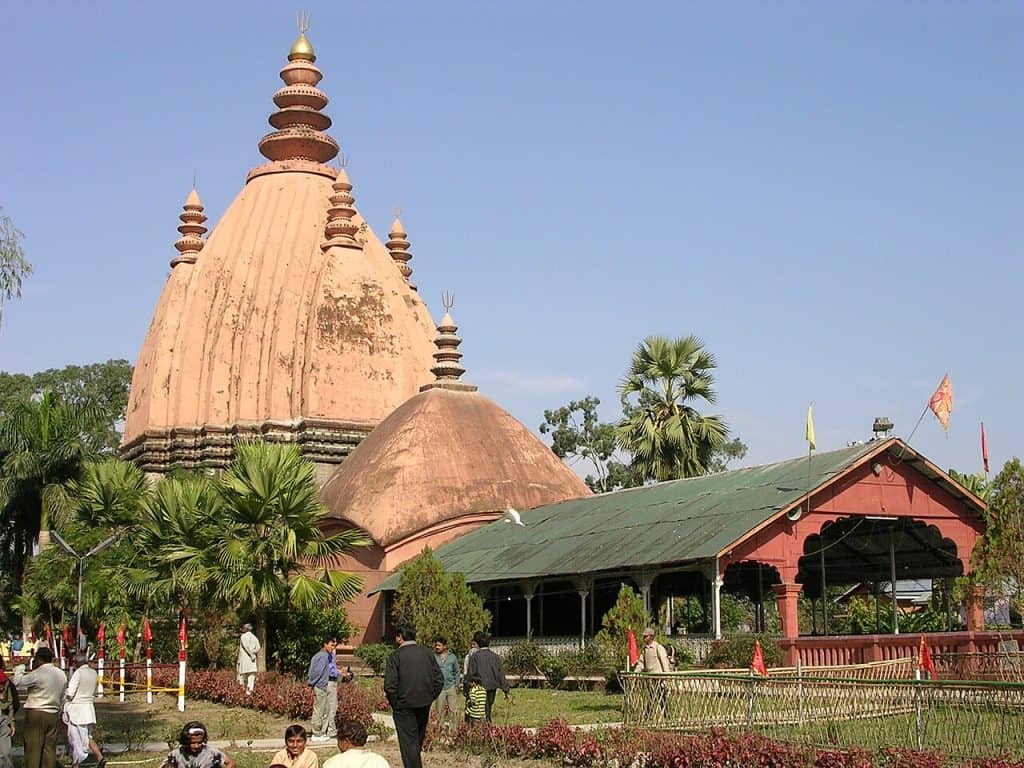Mahashivratri 2025, a night of divine energy, is dedicated to Lord Shiva, the destroyer of illusions and the creator of new beginnings!

The moment gets filled with trance as we celebrate the supreme power with a great sense of devotion. In 2025, Mahashivratri will be celebrated on February 26 uniting devotees across the world in reverence and spirituality.
Observed with deep veneration, it honours Lord Shiva’s immense power and seeks his blessings for inner peace, spiritual growth, and liberation. This sacred night serves as a reminder to pause, reflect, and connect with the divine, offering an opportunity to align with the universal energy that Shiva embodies.
The History Behind Mahashivratri
Mahashivratri is surrounded by rich legends that add to its spiritual significance. It is believed to mark the divine union of Lord Shiva and Goddess Parvati, symbolising the merging of Purusha (mind) and Prakriti (nature).
While the festival also commemorates Shiva’s selflessness during the churning of the ocean (Samudra Manthan), when he consumed the deadly poison Halahala to save the universe.
Another legend highlights Mahashivratri as the night when Shiva performed the Tandava, his cosmic dance that represents the cycles of creation, preservation, and destruction. Additionally, many believe that on this sacred night, Shiva appeared as a fiery pillar of light, symbolising his infinite and boundless nature.
Mahashivratri 2025 Celebrations Across India
Mahashivratri is celebrated with unique traditions in various parts of India, reflecting the diversity of devotion to Lord Shiva.

Varanasi, Uttar Pradesh
As the spiritual capital of India, Varanasi hosts vibrant Mahashivratri celebrations at the Kashi Vishwanath Temple. Devotees offer bel patra, milk, and flowers to the Shiva Linga, and the city buzzes with processions, bhajans, and mesmerising chants of “Om Namah Shivaya”. The Ganga Aarti adds to the spiritual fervour.
Somnath, Gujarat
The iconic Somnath Temple, one of the 12 Jyotirlingas, is renowned for its grand Mahashivratri celebrations. The highlight is a spectacular light and sound show on the temple’s main dome, captivating devotees and visitors alike.
Mandi, Himachal Pradesh
Known for its grand Shivaratri Fair, Mandi celebrates Mahashivratri at the historic Bhootnath Temple. Deities from nearby temples are paraded through the town in colourful processions, accompanied by music, dance, and rituals. The fair lasts for a week and attracts devotees from across the region.

Srikalahasti, Andhra Pradesh
The Srikalahasteeswara Temple, dedicated to Lord Shiva as the God of Air, is the focal point of Mahashivratri in this region. Devotees participate in night-long prayers, rituals, and abhishekams, seeking blessings and spiritual cleansing.
Sivasagar, Assam
The Shiva Dol Temple in Sivasagar is the centre of Mahashivratri celebrations. Devotees light lamps, offer prayers, and participate in cultural events, making the festival both spiritual and festive.

Adiyogi, Coimbatore, Tamil Nadu
The Isha Yoga Center celebrates Mahashivratri with grand cultural performances, meditation sessions, and spiritual discourses. The towering Adiyogi statue being the largest Shiva bust sculpture in the world is illuminated beautifully and becomes the centrepiece of the celebrations, drawing thousands.
Khajuraho, Madhya Pradesh
Khajuraho’s UNESCO World Heritage temples celebrate Mahashivratri with rituals and artistic performances. The Matangeshwar Temple sees special prayers, and the cultural events showcase India’s rich heritage in music and dance.
Rituals That Make Mahashivratri Sacred
Mahashivratri is celebrated with great faith, vibrant rituals, and unique traditions across India. Devotees observe a day-long fast, consuming only fruits and water to purify their body and mind. Shiva temples become hubs of worship, where offerings like milk, honey, bel patra (bilva leaves), and flowers are made to the Shiva Linga.
A highlight of the festival is the Shiva Baraat, a symbolic procession representing Lord Shiva’s wedding escort. It features vibrant displays of people dressed as Shiva, his attendants, and mythical beings, creating a festive and joyous atmosphere.
Devotees also participate in the night vigil, staying awake, chanting Lord Shiva’s name, and meditating, symbolising the victory of light over darkness. Additionally, temples and spiritual centres host cultural programs like music, dance, and meditation, further enhancing the spiritual and celebratory essence of Mahashivratri. These traditions inspire devotion, self-reflection, and community bonding.
From the grand processions in Varanasi to the serene rituals at Sivasagar, Maha Shivratri in 2025 is a celebration that is a reminder of Shiva’s infinite power and grace. May this Mahashivratri bring peace, prosperity, and spiritual growth to all! Om Namah Shivaya!
FAQs on Maha Shivratri
What is Maha Shivratri?
Maha Shivratri is one of the most significant Hindu festivals dedicated to Lord Shiva. It is observed as a night of devotion, fasting, and spiritual awakening, commemorating either the divine marriage of Shiva and Parvati or the night when Shiva performed the Tandava dance.
When is Maha Shivratri celebrated?
Maha Shivratri is observed on the 14th night of the waning moon in the Hindu month of Phalguna (February-March), which falls on Chaturdashi Tithi of the Krishna Paksha.
What is the significance of Maha Shivratri?
Maha Shivratri symbolizes overcoming darkness and ignorance in life and the world. It is believed that on this night, Shiva blesses his devotees with spiritual growth, inner strength, and liberation from past sins.
Why do people fast on Maha Shivratri?
Fasting on Maha Shivratri is considered a way to purify the body and mind, show devotion to Lord Shiva, and seek his blessings for prosperity and enlightenment.
What are the rituals performed on Maha Shivratri?
- Fasting: Devotees observe a strict fast, consuming only fruits, milk, or water. Some observe a nirjala (waterless) fast.
- Shiva Linga Abhishek: The Shiva Linga is bathed with milk, honey, ghee, curd, sugar, and water, followed by offerings of bel leaves, flowers, and bael fruit.
- Chanting and Meditation: Devotees recite mantras like Om Namah Shivaya and read the Shiva Purana.
- Night Vigil (Jagran): People stay awake, engaging in bhajans, kirtans, and prayers.
- Temple Visits: Pilgrimages to Jyotirlingas and Shiva temples are common.
Can Maha Shivratri be celebrated at home?
Yes, Maha Shivratri can be observed at home by keeping a fast, offering water and bel leaves to a Shiva idol or Linga, chanting Shiva mantras, and meditating.
What is the spiritual significance of staying awake on Maha Shivratri?
Keeping vigil throughout the night symbolizes self-control, awareness, and breaking free from ignorance, aligning oneself with divine consciousness.
What are the foods allowed during the Maha Shivratri fast?
Devotees typically consume:
- Fruits (bananas, apples, oranges, pomegranates)
- Milk-based items like kheer and sabudana kheer
- Sabudana khichdi, kuttu (buckwheat) puris, or samak rice
- Dry fruits, coconut, honey, and herbal teas
Why is bel patra (bilva leaves) offered to Shiva?
Bel patra is sacred to Lord Shiva, believed to cool his fiery form and symbolize purity, devotion, and the destruction of negativity.
What is the significance of Maha Shivratri in different regions?
- North India: Devotees visit temples, perform Rudrabhishek, and keep a strict fast.
- South India: Celebrated with special pujas, temple processions, and night-long prayers.
- Varanasi & Ujjain: Massive gatherings take place at Kashi Vishwanath and Mahakaleshwar Jyotirlinga temples.
- Karnataka & Tamil Nadu: Traditional processions and devotional songs mark the occasion.
- Nepal: Maha Shivratri is grandly celebrated at Pashupatinath Temple with lakhs of devotees.
Which are the famous Jyotirlingas to visit during Maha Shivratri?
The 12 Jyotirlingas are considered highly auspicious, including:
- Kedarnath (Uttarakhand)
- Somnath (Gujarat)
- Mahakaleshwar (Madhya Pradesh)
- Kashi Vishwanath (Varanasi, Uttar Pradesh)
- Trimbakeshwar (Maharashtra)
- Rameshwaram (Tamil Nadu)
How does Maha Shivratri differ from other Shivratris?
There are 12 Shivratris in a year, observed monthly on Krishna Paksha Chaturdashi. However, Maha Shivratri is the most auspicious, occurring once a year.
What are some powerful mantras to chant on Maha Shivratri?
- Om Namah Shivaya
- Maha Mrityunjaya Mantra – “ॐ त्र्यम्बकं यजामहे सुगन्धिं पुष्टिवर्धनम्। उर्वारुकमिव बन्धनान् मृत्योर्मुक्षीय मामृतात्॥”
- Shiva Panchakshari Mantra – “नमः शिवाय”
What should one avoid on Maha Shivratri?
- Consumption of non-vegetarian food, onion, garlic, alcohol, and grains.
- Engaging in negative thoughts or arguments.
- Sleeping during the night, as the festival emphasizes meditation and devotion.
What is the significance of Rudrabhishek on Maha Shivratri?
Rudrabhishek is a sacred ritual where the Shiva Linga is bathed with sacred offerings while reciting Vedic mantras. It is believed to remove obstacles, bless devotees with prosperity, and bring peace.
Read more: Latest



